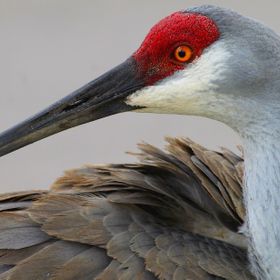Photo of a penguin rookery at Cape Hallet in Antarctica. A U.S. Navy LC-130F ski-equipped cargo plane stands in the background....
Read more
Photo of a penguin rookery at Cape Hallet in Antarctica. A U.S. Navy LC-130F ski-equipped cargo plane stands in the background.
Read less
Read less
Views
85
Likes
Awards
Achievement in Originality
Top Pick Award
Staff Favorite
Halfway22 Award
Curator's Selection
Top Ranks
Categories
Same photographer See allBehind The Lens
Discover more photos See all
Behind The Lens
Location
From 1965 to 1969, I served in the U.S. Navy. The Navy trained me to be a photographer and that's the job I did during my four years of service. From 1967-69, I was a member of Antarctic Development Squadron Six (VXE-6). The squadron provided aerial support for the Navy's Operation Deep Freeze, giving logistical support to the scientists of the U.S. Antarctic Research Program (USARP). We spent six months, during the Austral summer, living and working in Antarctica, based out of the main U.S. base at McMurdo Station. On this occasion, I flew on one of our squadron's LC-130F Lockheed Hercules ski-equipped cargo aircraft to Hallet Station, another U.S. installation where scientists were studying Adélie penguins in a nearby rookery. This photo shows thousands of birds in the rookery with our aircraft in the middle ground and mountains in the background.Time
No idea. During the six months we were in Antarctica, it was daylight for 24 hours a day. I would guess this was either late morning or early afternoon as I remember eating lunch in the station mess hall while we were there, then going out to the rookery.Lighting
Ha! With 24-hour daylight and not much cloud cover that day there was no need of supplemental lighting. It was just the sun.Equipment
Nikon FTN 35mm SLR, Nikkor f/1.4 50mm lens, UV filter. Kodachrome 25 transparency film.Inspiration
A buddy of mine was going on the trip and got hold of me to ask if I wanted to come along. Fly to a penguin rookery and wander among them for several hours making photographs? Absolutely!Editing
Post-processing? Didn't exist in 1968, '69. We shipped our transparency film back to the Naval Photographic Center (NPC) in Anacostia, Va. (near D.C.) for processing. The frames were slide mounted, reviewed, those deemed worthy added to the NPC archives for future use by the Navy and other government agencies. We photographers received duplicate slides of all our technically good images. Many, many years later I had those dupe slides scanned into digital files, one of which you are looking at here.In my camera bag
My youngest son borrowed my Nikon kit in the late 1990s when he was taking a photography course in college. Thieves broke into his apartment and stole it all along with lots of other fenceable belongings from he and his roommates. So I no longer have the gear with which this image was made. Today, I carry a pair of Canon EOS Rebel T3 DSLRs and a Canon EOS Digital Rebel XS DSLR along with these Canon lenses: Canon EF-S 10-22mm f/3.5-4.5 USM, Canon EF 100-400mm f/4.5-5.6L IS USM, Canon EF-S 55-250mm f/4-5.6L IS II, Canon EF-S 18-55mm f/3.5-5.6 IS II, and Canon EF 28-90mm f/4-5.6 USM.Feedback
Hallet Station was closed years ago. The Navy no longer goes to Antarctica. The New York Air National Guard took over the LC-130s for flying on the Ice. All the support work the Navy once did now is done by civilian contractors. So if you want to go somewhere in Antarctica other than on a tourist visit to the Antarctic Peninsula, you'll have to join the NYANG or hire on for one of those civilian support jobs. Or get a PhD in some scientific field, write up a research proposal to the U.S. Antarctic Program (USAP), and cross your fingers that it's accepted and they fund your research and send you to the Ice. Good luck with all that.













































